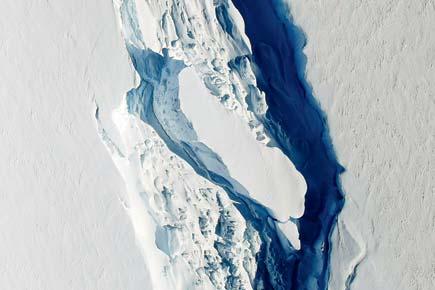One of the largest ever recorded iceberg has broken away from Antarctica, and now the trillion-tonne iceberg poses a serious hazard to ships and marine life


This file photo taken in November 2016 shows an image obtained from NASA showing the Antarctic Peninsula’s rift in the Larsen C ice shelf. Pics/AFP
One of the largest ever recorded iceberg has broken away from Antarctica, and now the trillion-tonne iceberg poses a serious hazard to ships and marine life. Sciebntists were anticipating this to happen but since it is such a large chunk it may now pose a serious hazard to ships around the South Pole, scientists said on Wednesday.
ADVERTISEMENT
The calving of the 5,800 square kilometre iceberg leaves the Larsen C Ice Shelf reduced in area by more than 12 per cent, and the landscape of the Antarctic Peninsula changed forever.

This handout image received on July 12 from Swansea University shows an illustration depicting an iceberg detachment from the Larsen C Ice Shelf
Icebergs calve from Antarctica all the time, but because this one is particularly large, its path across the ocean needs to be monitored as it could pose a hazard to maritime traffic.
The event occurred sometime between July 10 and yesterday, said researchers who had been monitoring the growing rift in the West Antarctic ice shelf for years. The iceberg, which is likely to be named A68, weighs more than a trillion tonne. Its volume is twice that of Lake Erie, one of the Great Lakes.
There is a risk that Larsen C may eventually follow the example of its neighbour, Larsen B, which disintegrated in 2002 following a similar rift-induced calving event in 1995.
"We have been anticipating this event for months, and have been surprised how long it took for the rift to break through the final few kilometres of ice," said Professor Adrian Luckman of Swansea University in the UK, who is also the lead investigator of Project MIDAS that has been monitoring the crack.
 Subscribe today by clicking the link and stay updated with the latest news!" Click here!
Subscribe today by clicking the link and stay updated with the latest news!" Click here!







